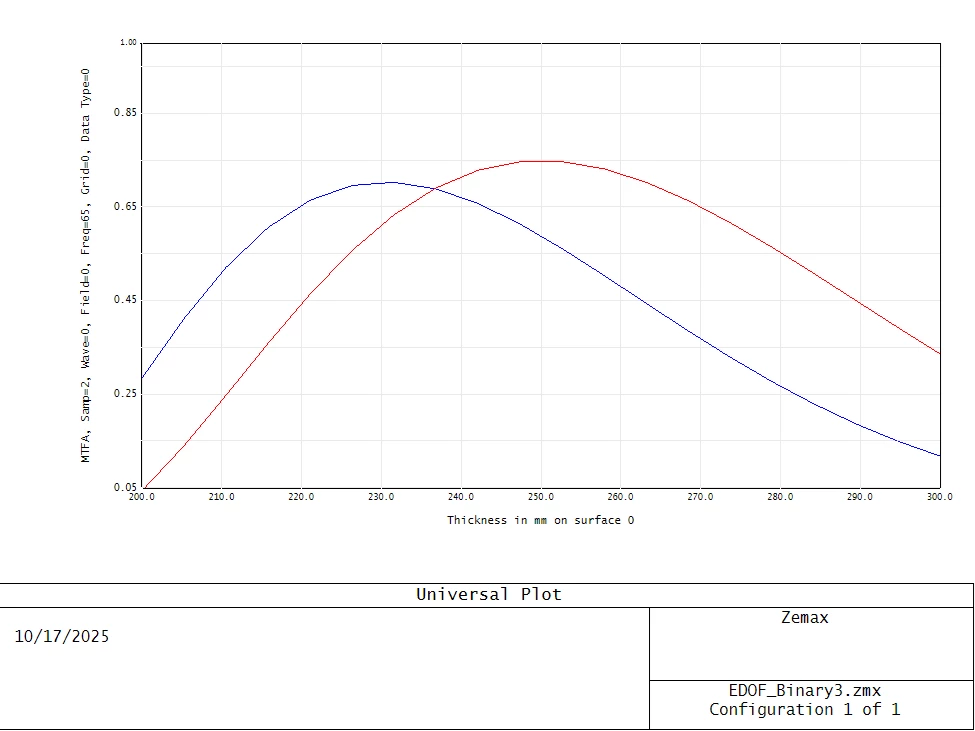Hi all,
I'm looking for help understanding how to effectively extend depth of field using optical design principles—specifically within the realm of fundamental optics (no digital post-processing).
The concept I'm exploring involves a multi-focal lens system, similar in spirit to intraocular lenses. To illustrate, I’ve configured a simple f/5.5 system using a single Binary 3 surface. This allows for two annular regions where I varied the phase² and phase⁴ terms to achieve nearly perfect spot sizes at two distinct object positions—one 25mm before and one 25mm after the nominal object at 250 mm. The focal length is approximately 10 mm.
In the diagram below:

- Green rays represent a conventional single-focus lens.
- Blue rays show the multi-focal design, optimized for object distances of ±25 mm from the nominal.
- The inner multi-focal region (longer focal length) has a radius equal to half the full aperture.
Here’s the resulting MTF vs. object distance plot:

- Red curve: single-focus lens (green rays).
- Blue curve: multi-focal lens (blue rays).
While the multi-focal design shifts and degrades the MTF response, I don’t observe a clear extension of the depth of field.
I’m considering whether using a Binary 4 surface to create additional focal zones could yield meaningful improvement. Has anyone explored this approach? Is there a theoretical framework or design strategy I should be looking into?
Any guidance or references would be greatly appreciated!
Kind regards,
John



